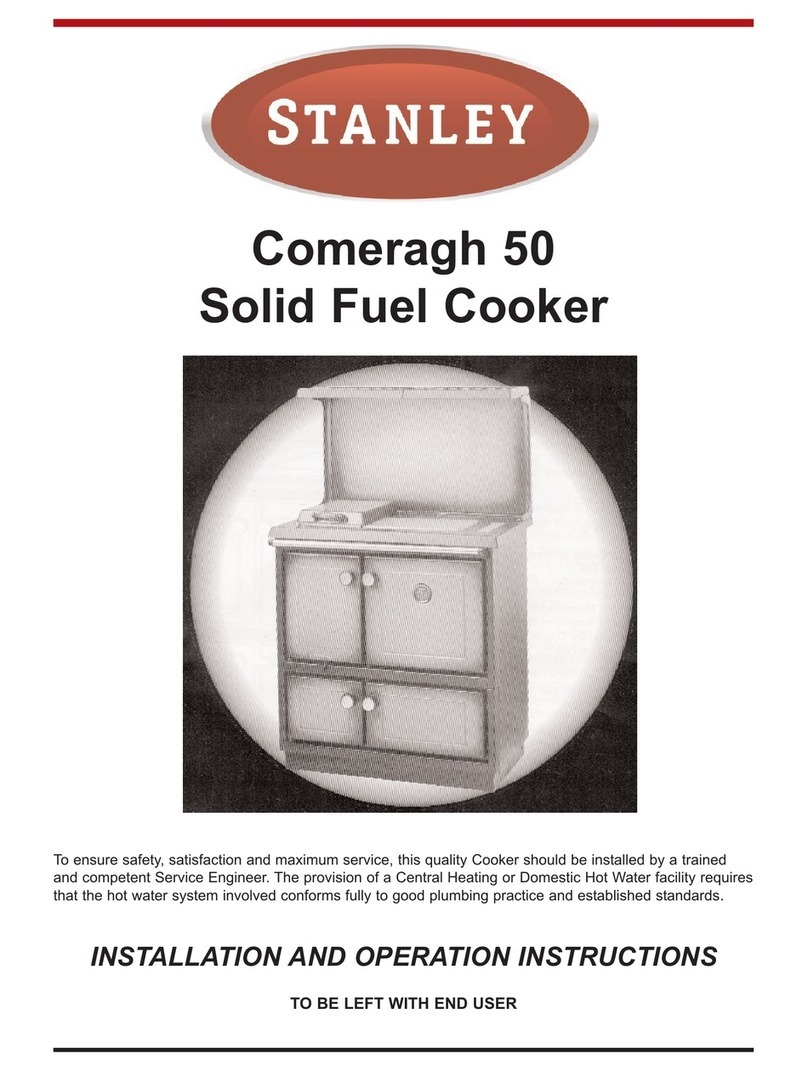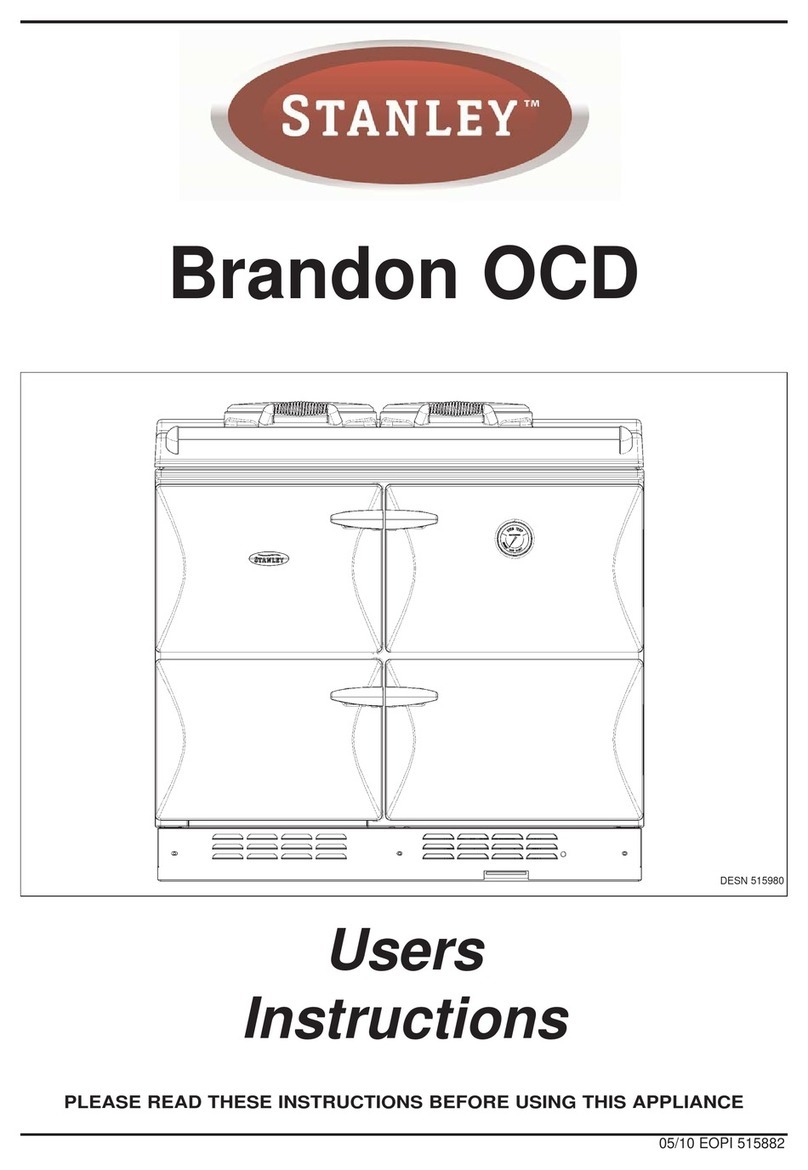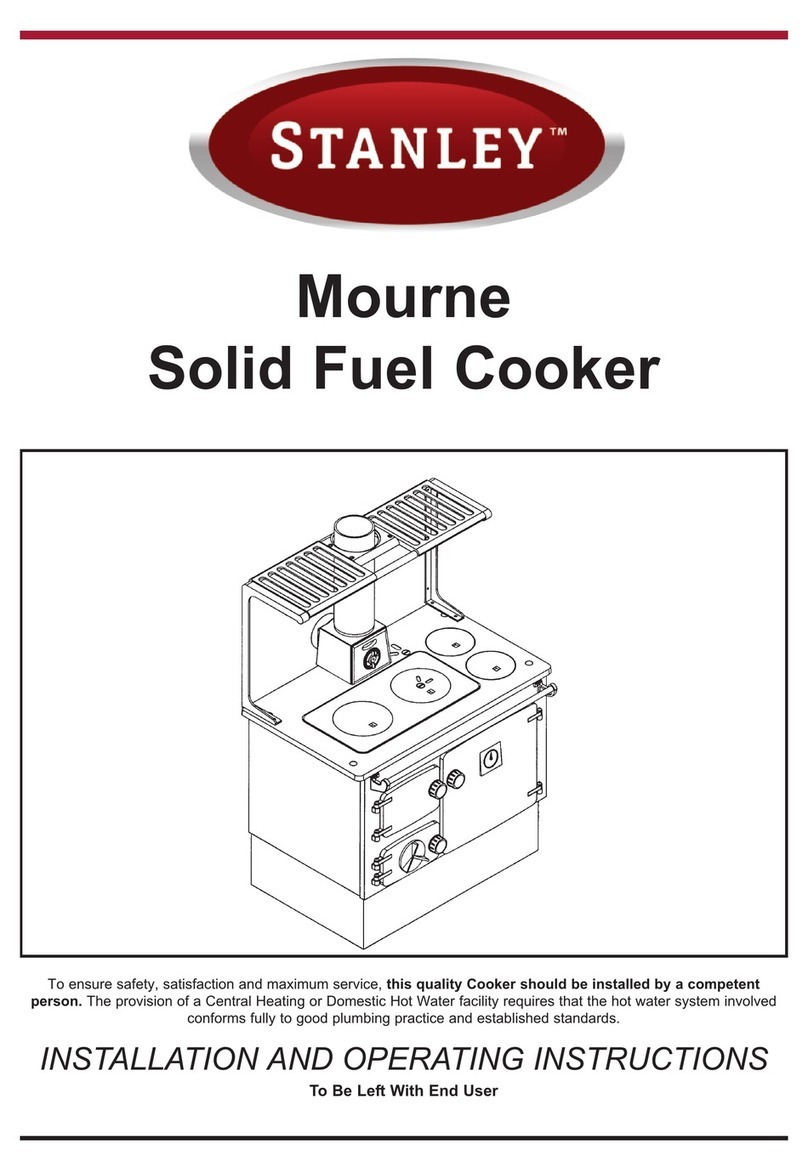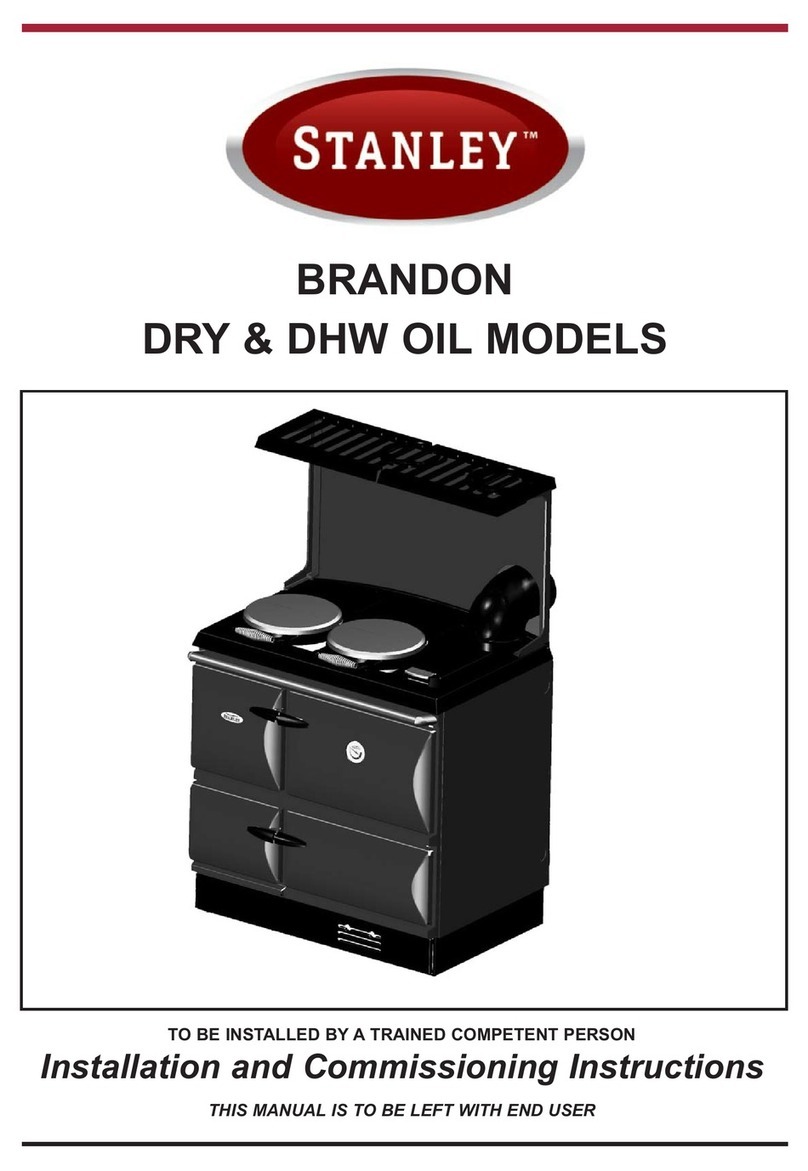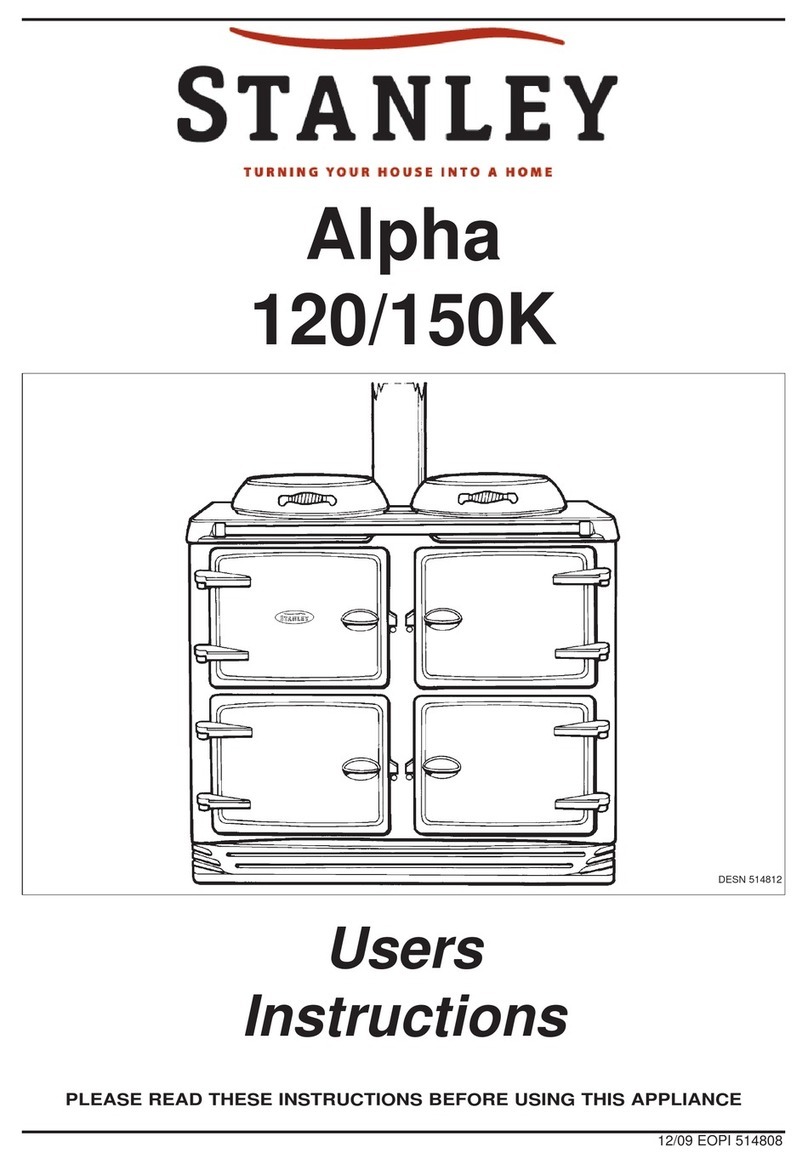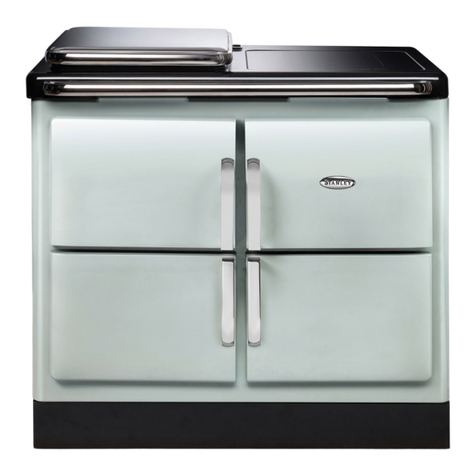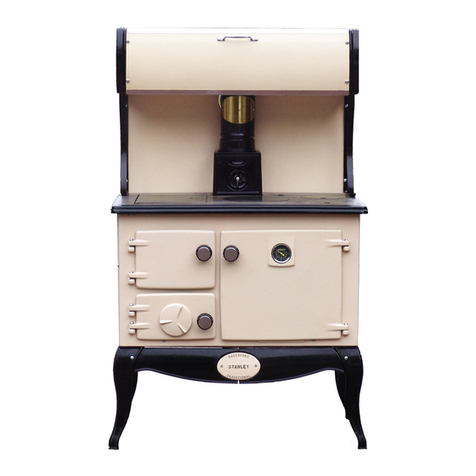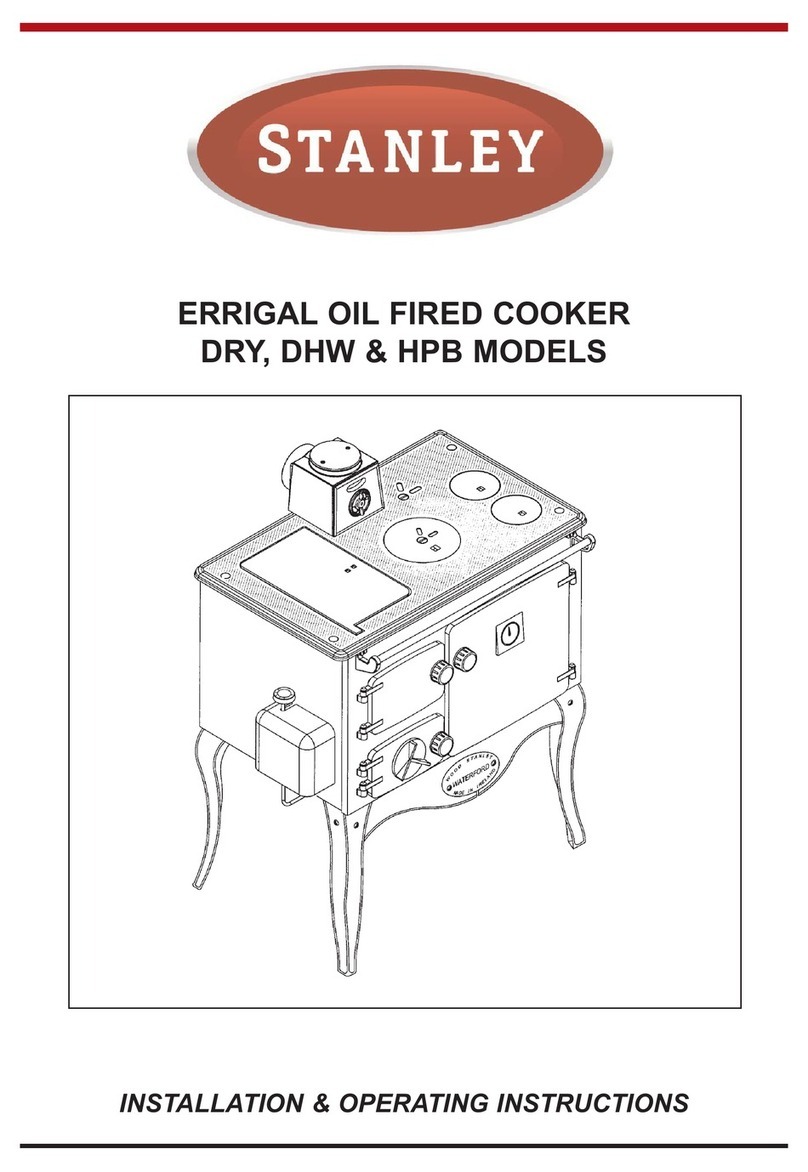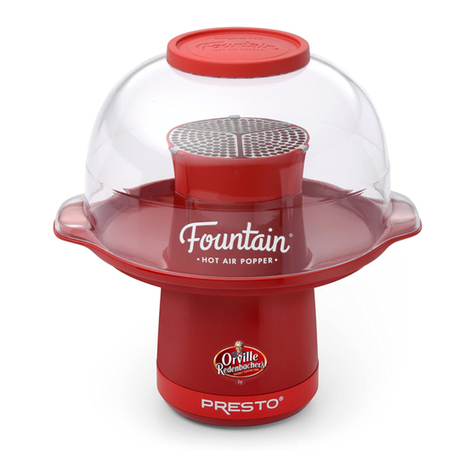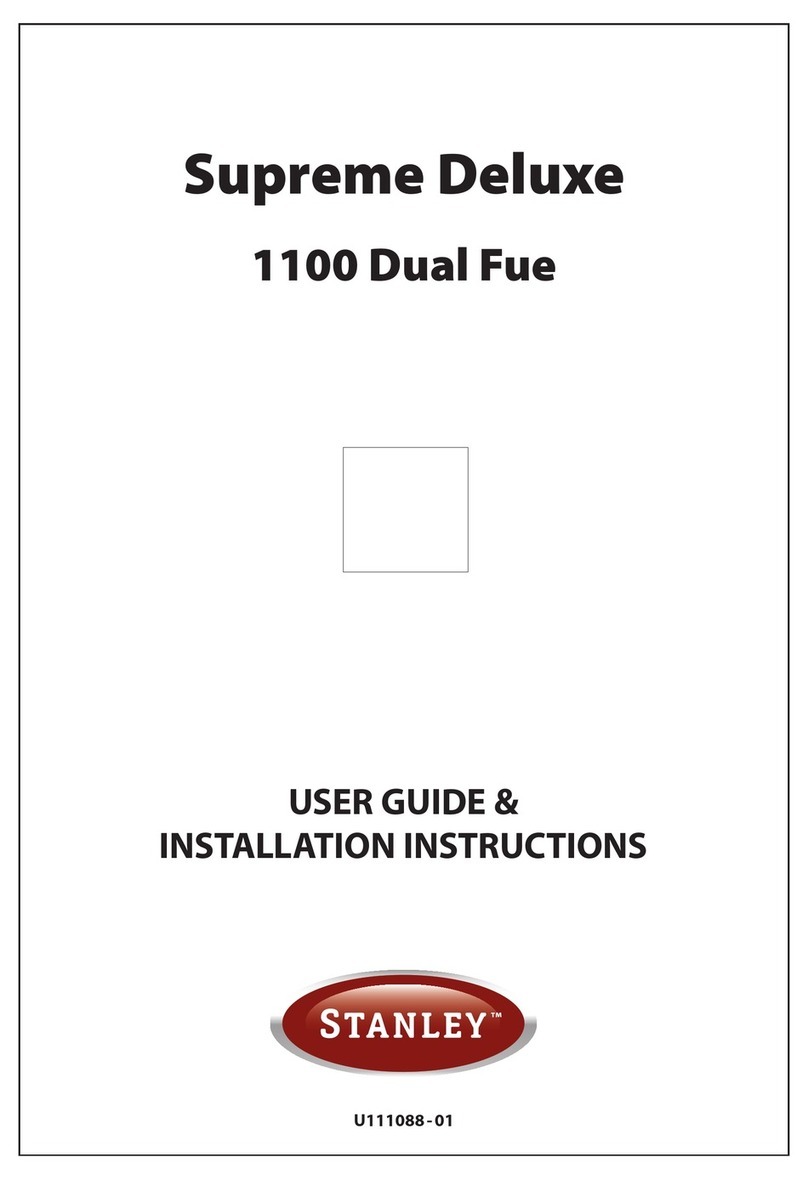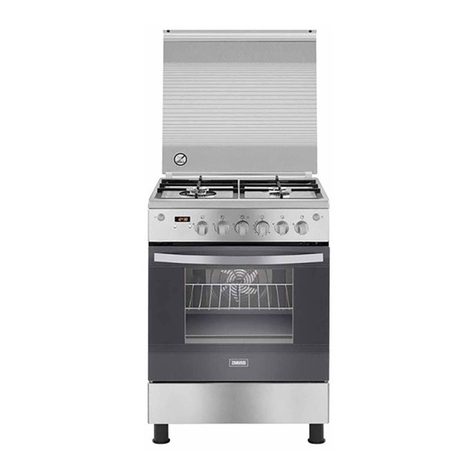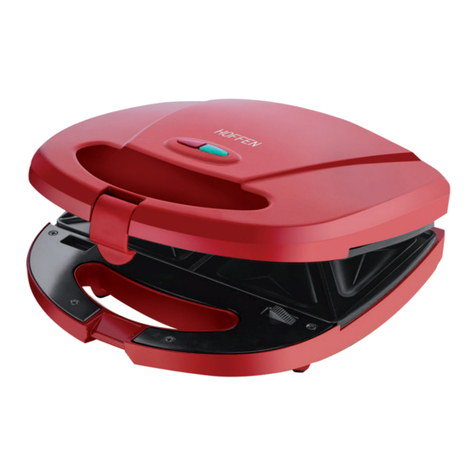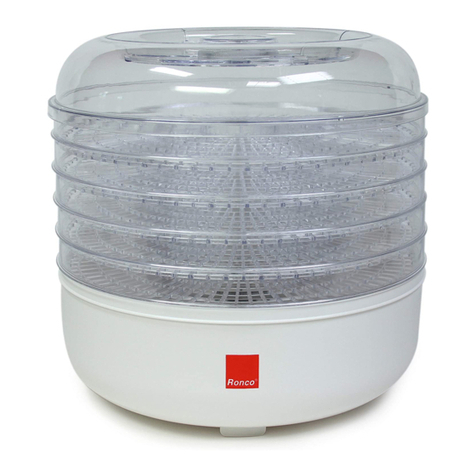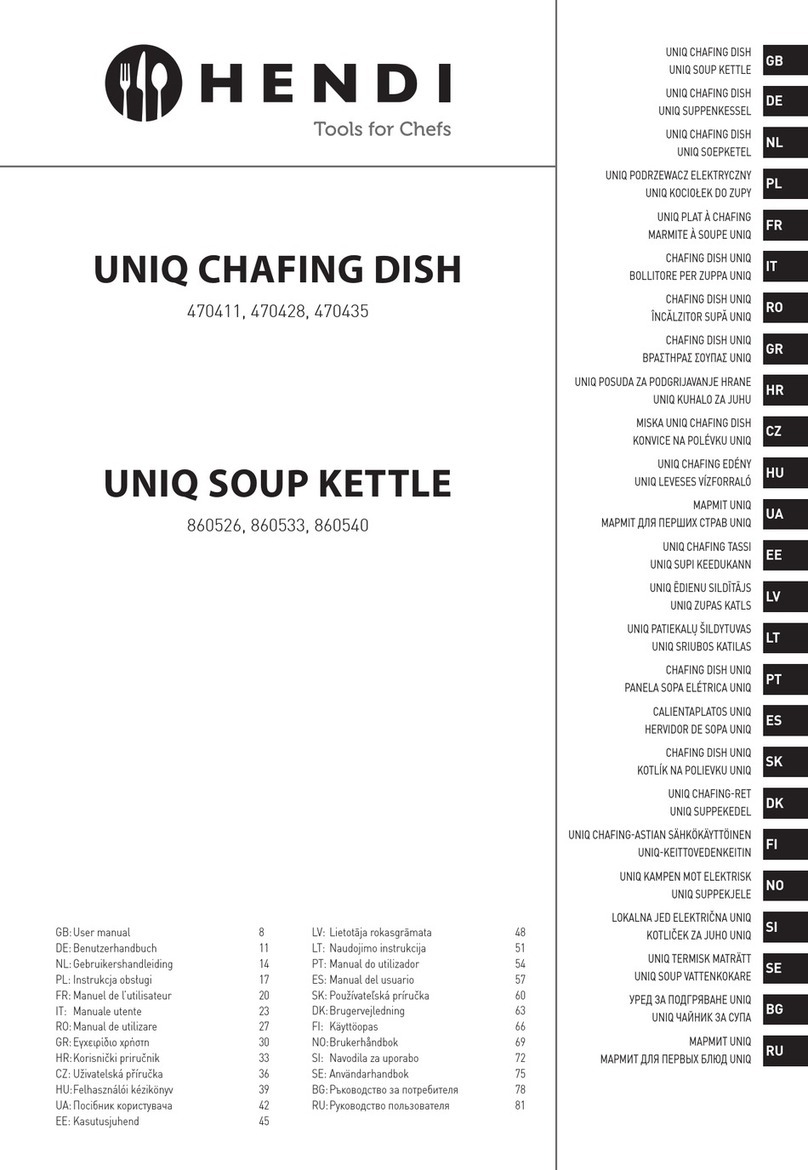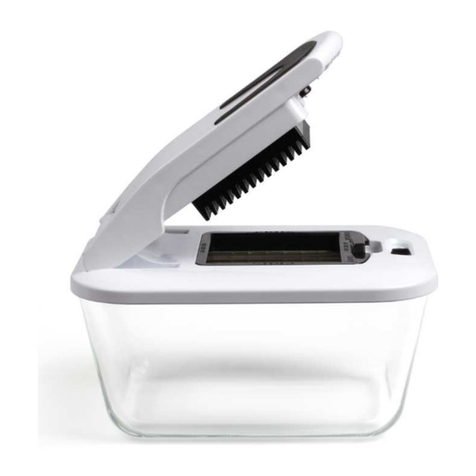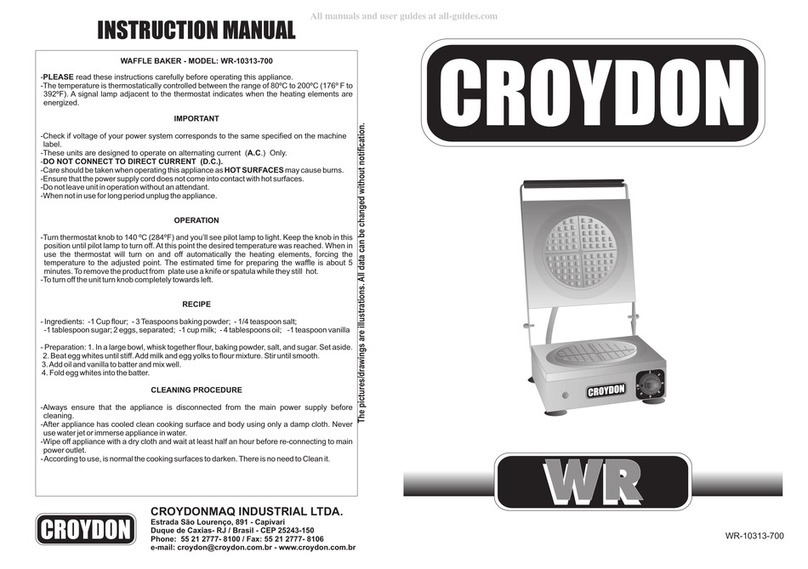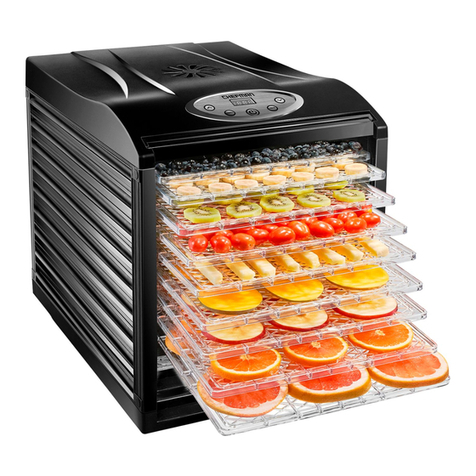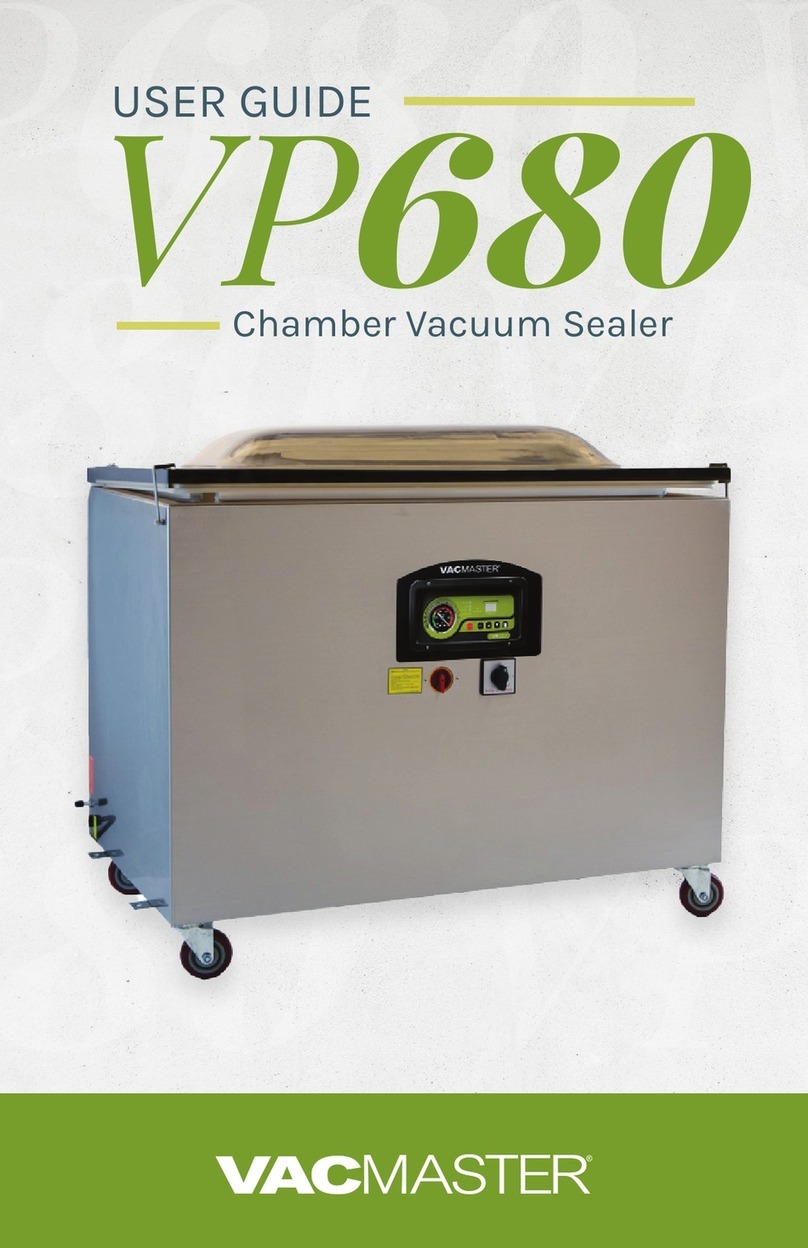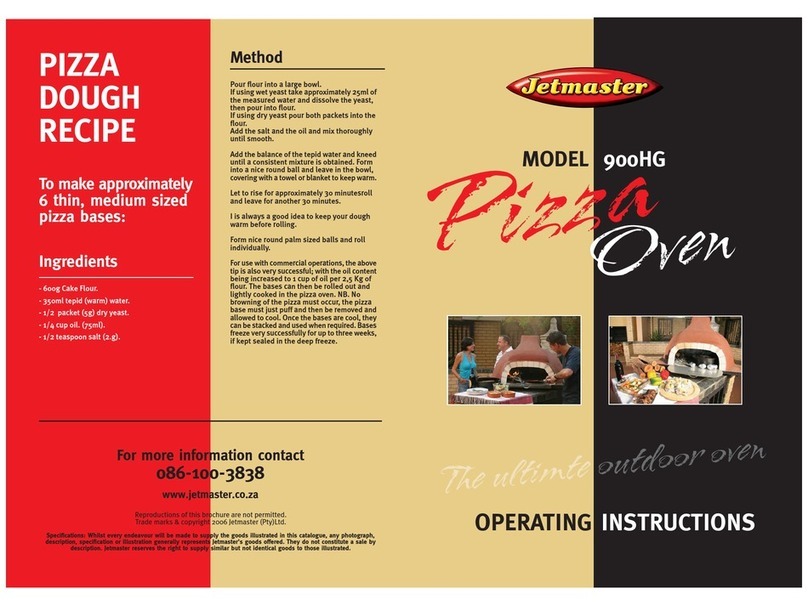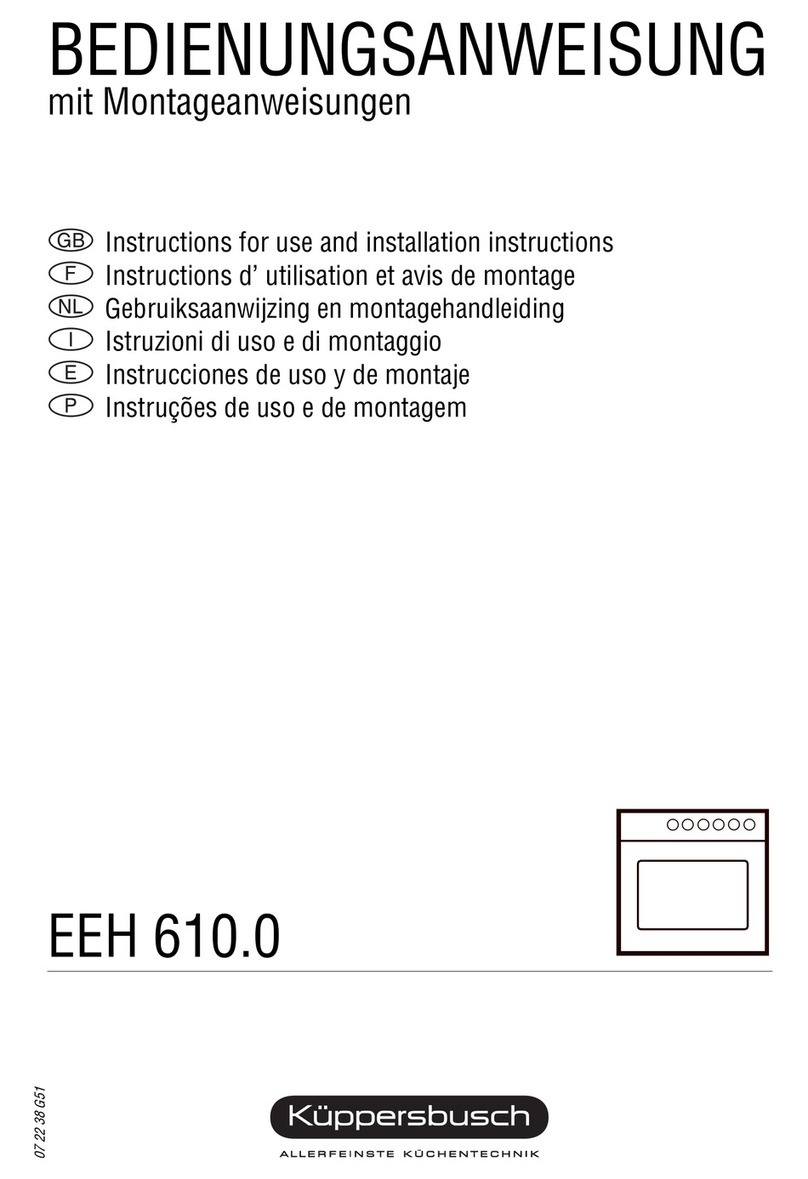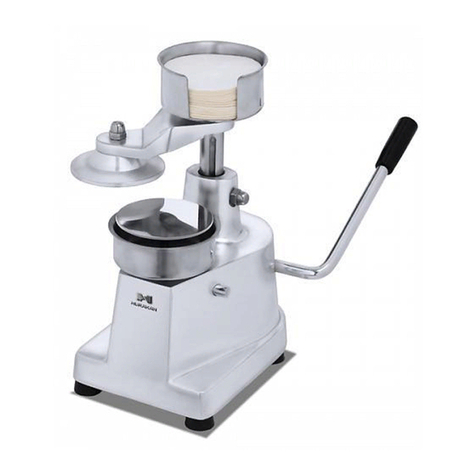Code no 6 Flue thermistor over temperature
(Gas only)
Code no 8 Oven burner faulty
Code no 9 Boiler Excess Temperature
When an error occurs it can be reset by pressing the
“ ” button for 5 seconds, the code no. on the display
will disappear, if the error is still present the code no.
will reappear, it will be necessary to call the Stanley
service centre.
n the special case of a no. 9 code, this could be due
to all radiator valves being turned off. t is a
requirement that at least 1 radiator in zone 1 is
permanently on.
f Code 4 or 5 appear on the display screen prior to
the fault being cleared using the F button, it will
require the high limit swiches to be reset, to access
and reset the high limit switches take the following
steps:
1. Remove plinth at base of cooker, the high limit
switches are located in the centre of the base
plate, see Fig.8.
2. Press the LH & RH buttons to reset the High Limit
reset switches, then press the F button for 5
seconds to clear the fault on the display screen.
However, if the high limit does not reset it may be
due to the appliance being excessively hot, wait until
the appliance has cooled and press the high limit
switches again, if they do not reset when appliance
is cool, please contact your local service engineer.
Fig 8
H T PLATE INSULATING C VERS
The insulating covers retain most of the heat that
would otherwise be radiated into the kitchen. They
also retain the heat in the hot plates so that rapid
heating of cooking utensils will occur when one or
both of them are lifted for cooking purposes.
Hotplate
Covers
Simmer
Plate
Cover
Fig.9 Fig.9a
C KING UTENSILS
For best cooking results and economy of operation
use heavy based, flat bottomed utensils.
IMP RTANT: WHEN HOTPLATE S NOT N USE
ENSURE THAT HOTPLATE COVERS ARE N A
DOWN POS T ON.
IMP RTANT: DO NOT USE M S-SHAPED PANS
WH CH MAY BE UNSU TABLE. DO NOT USE
ROUND BASED WOKS.
IMP RTANT: WE DO NOT RECOMMEND DEEP
FAT FRY NG ON TH S APPL ANCE.
CLEANING
IMP RTANT: BE CAREFUL F THE H T
APPLIANCE.
General cleaning must be carried out when the
cooker is cool.
Stanley cookers are finished in a high gloss vitreous
enamel. To keep the enamel in the best condition
observe the following tips:
1. Wipe over daily with a soapy damp cloth,
followed by a polish with a clean dry duster.2.
f milk, fruit juice or anything containing acid is
spilt on the hob or down the cooker, be sure to
wipe it immediately or the vitreous enamel may
be permanently discoloured. Jam and
preservatives containing sugar can permanently
damage the vitreous enamel.
3. Keep a damp cloth to hand while cooking, to
wipe up any spills as they occur, so they do not
harden and become more difficult to remove
later.
4. f spills do become baked on, a cream cleanser
can be used. For stubborn deposits a soap
impregnated pad can be carefully used on the
vitreous enamel.
8

